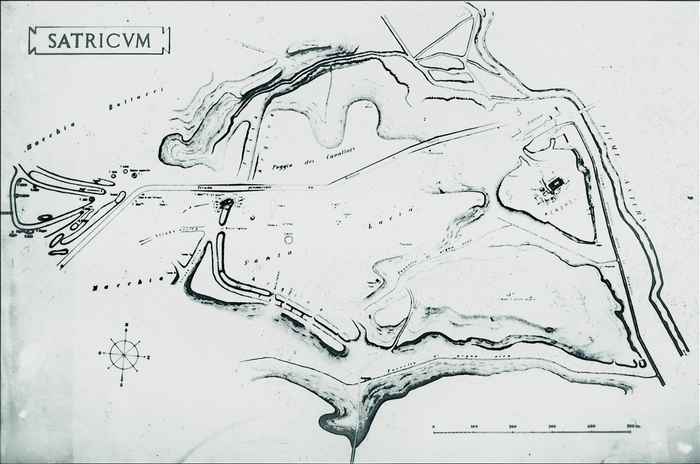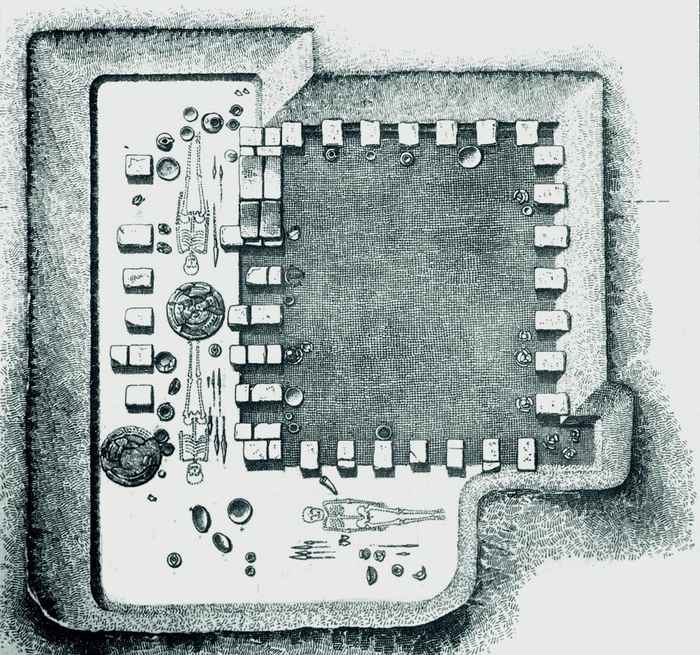Excavations Northwest Necropolis

Italian excavations
During the Italian excavations of 1896-1898 and 1908-1910, several burial clusters dating to the Iron Age were discovered in the area northwest of the acropolis and extending in a northwesterly direction, along the ancient road to Ardea. The burials have been destroyed in recent times, but the excavation reports and several drawings from the time of their exploration have been preserved. In 1995 the necropolis was published by D.J. Waarsenburg.
The earliest graves (late 9th- 7th century BC)
The earliest burials date to the late 9th century BC. These consisted of grave-pits containing the cremated remains of the deceased in an urn as well as a simple funerary outfit. From the early 8th century onwards inhumation begins to be practiced, with bigger and more valuable gifts. One cluster for an extended family (a clan of several families) can be dated to the middle of the 8th century, was laid out near the Archaic settlement border. The shapes of graves in this burial site resemble those of the huts from the same period on the acropolis. While at first cremations are buried in these graves, in the 7th century the same graves are seen to be used for inhumation thereby earlier cremation urns being shoved aside. Around the central hut-graves where the most important people were buried, simple fossa graves are laid out, each surrounded by a stone circle. These contain the remains of individuals of lower rank. At the end of the 7th century, the burial site is abandoned since it is then completely covered by an earth mound (tumulus).

‘Princely’ graves (7th century BC)
One of the most imposing finds is a 7th-century tomb of princely style which was hidden in a tumulus (Tomb II). The tomb, a square stone-built chamber with two corridors, contained up to four males buried between 700/685-620/610. Each deceased was provided with a valuable set of bronze symposium utensils complemented with luxury ceramics imported from Corinth. In addition, a complete warrior outfit was found consisting of a shield, a sword and a series of lances.
Another extraordinary grave chamber from the middle of the 7th century is tomb VI, situated near the former. Consisting of a large room covered with a roof supported by four wooden columns, it contained the largest collection of amber objects ever found. Among the 600 objects were small statuettes of standing naked women and small squatting monkeys holding their snouts in both hands.They are interpreted female and male sexuality symbols. Together with the other amber objects they probably decorated a ceremonial shroud. It has been suggested the buried individual was a priestess in the sanctuary of Mater Matuta.
After 610 BC the necropolis was abandoned, perhaps as the result of changes in the burial ritual that have been recorded elsewhere in ancient Latium. Parts of the burial ground were integrated in the Archaic city area.